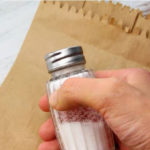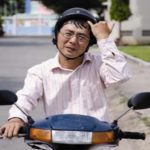Potato Peels: A Hidden Treasure
After peeling potatoes, many people discard the peels as waste. Yet, these humble scraps hold valuable properties that can serve various household needs with a little ingenuity.
Ingenious Uses for Potato Peels
Once you’ve washed and peeled potatoes, save the peels for these clever applications:
Nourish Houseplants
Potato peels are rich in fiber and nutrients, including salicylic acid, which stimulates root growth. They also aid in moisture retention and provide natural nourishment for plants. Harness their potential in your flower pots and gardens.

Tip: Convert potato peels into organic plant fertilizer. (Image: Health &Techy)
Soak the peels in water for 2-3 days. Add a dash of white vinegar, another growth stimulant for plants. This solution helps balance soil pH, preventing yellowing leaves.
Extract the nutrient-rich water and dilute it before watering plants. While this method takes about 2 months to show significant effects, it nourishes roots, enhances disease resistance, and promotes branching and flowering.
Alternatively, finely chop potato peels and mix them into the soil or bury them at the base of plants to improve growth and moisture retention.
Clean Electric Kettles
Over time, electric kettles accumulate scale and residue that can compromise their performance. Fortunately, potato peels offer a simple solution.
Place raw potato peels in the kettle and boil. Let the mixture simmer for 3-5 minutes, then discard the peels and water. The starch from the peels binds to the scale, making it easy to rinse away.
For heavily scaled kettles, repeat the process 2-3 times to achieve a thorough clean.
Remove Hard Water Stains from Faucets and Sinks
Hard water stains on faucets and sinks can be stubborn to remove with regular cleaners. Potato peels contain starch, which transforms into a paste-like substance when heated. This paste effectively lifts dirt and grime.
Simply boil the peels and add 1-2 tablespoons of dish soap and 1 tablespoon of salt to the boiling water. Turn off the heat and let it cool. Use the solution to scrub faucets, sinks, and basins, then rinse with clean water to reveal a sparkling finish.
You can also rub potato peels directly onto stainless steel faucets, let sit for 3 minutes, and wipe away with a clean cloth to remove stains.

Potato peels make an effective homemade cleaning agent. (Image: Timesofindia)
Polish Stainless Steel
Using potato peels to clean stainless steel faucets or electric kettles is a breeze. Rub a fresh potato peel on the surface, let it sit for 3 minutes, then wipe with a clean cloth to restore shine. Repeat 2-3 times for heavily soiled areas.
Degrease Surfaces and Fabrics
Oil residue on kitchen surfaces and cookware is inevitable. To remove it, rub the inside of a potato peel over the greasy surface. Wipe with a damp cloth afterward. Regular use prevents grease buildup and keeps surfaces pristine.
Potato peels also work against oil stains on clothing. The natural cleaning agents in the peels lift away grease. Exercise caution on delicate fabrics.
Polish Leather
Renew the luster of leather shoes, bags, belts, and furniture by rubbing a freshly peeled potato over the surface. Wipe with a soft cloth to reveal a shiny finish without the need for expensive shoe polish.
Try these clever tips to transform discarded potato peels into useful household solutions.
Quick and Effective Ways to Clean a Kettle
 Clean a Kettle’>
Clean a Kettle’>Are you having trouble with cleaning your super speed kettle? If not regularly maintained, dirt and grime can reduce the performance and longevity of the bottle. Let us provide you with some helpful tips to quickly and efficiently clean your kettle in this article!





































